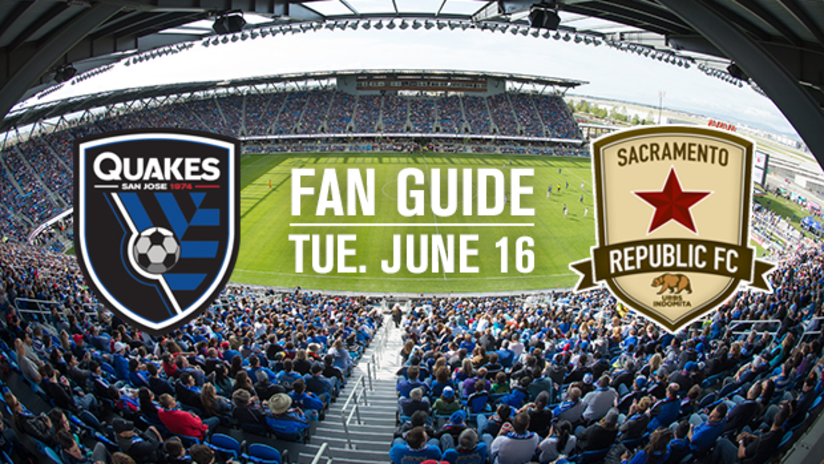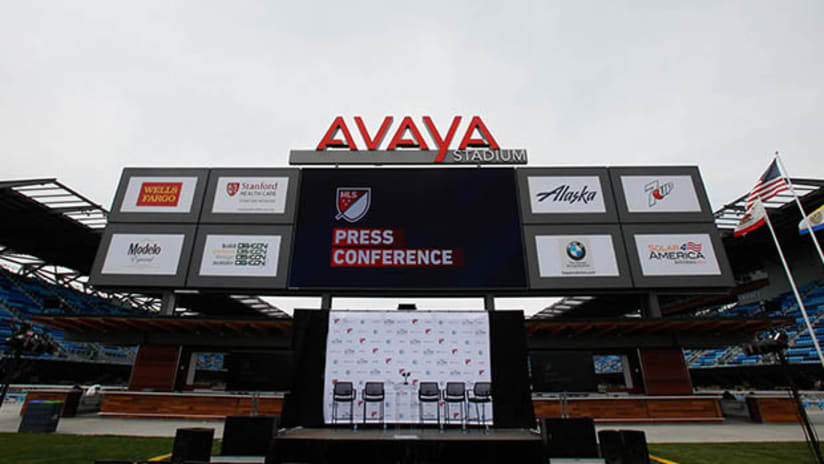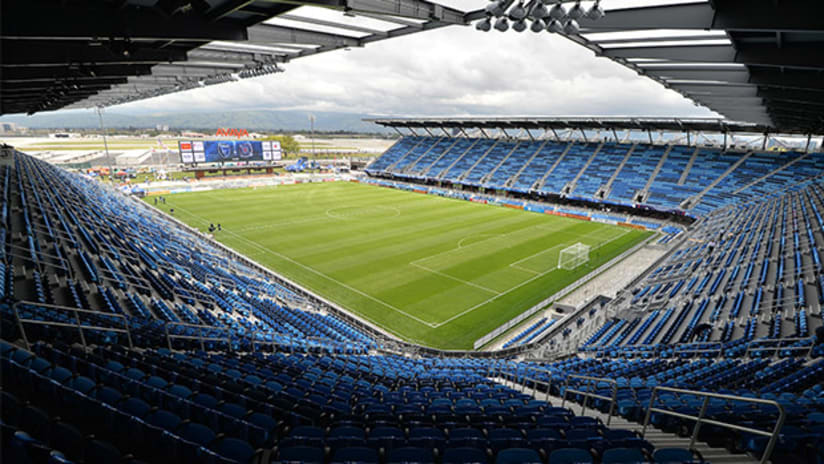The New Stadium blog will feature updates regarding the club's development project on Coleman Ave. Keep an eye out for Q&As, photos and breaking news about the facility. This week, SJEarthquakes.com sat down with club president Dave Kaval to discuss the latest stadium news. This post will run as a two-part series with the second installment to come on Thursday, Dec. 13. Topics included in the latter version will include: Supporters' Section, the new project manager, commercial development surrounding the project and naming rights. Stay tuned for more!
CLICK FOR NEW STADIUM SEASON TICKET INFORMATION
SJEarthquakes.com: Looking back on Groundbreaking Day, what was the most resounding memory that you have taken away from the event?
Dave Kaval: The thing about the groundbreaking day that was really special to me was how many people from the community turned out to support our effort. One of the really cool things was people who brought their own shovels because it showed such an organic support that everybody showed up to support the team and the stadium project together. There were a couple of moments where I saw families with shovels of all different sizes and that was one of the coolest parts.
SJEQ: What was the idea behind Groundbreaking Day?
DK: In thinking about what type of team we are, we’re very close with the Bay Area community and we have a great relationship with San Jose; we’ve been here over 40 years and I wanted a groundbreaking that wasn’t a golden shovel event with owners and executives – I wanted something where everybody could participate. That’s what we are – we’re an accessible team that’s connected to the community in a unique way and I felt that breaking a Guinness World Record together was an embodiment of that philosophy.
"Right now with the Environmental Impact Report, we were limited to 18,000 seats – we think that’s a great number to start with and we’ll have a great demand for those seats, but over time we can decide to enclose that last end." ~ Kaval on new stadium's horseshoe design
SJEQ: Now that the club has set a precedent for involving the community in the construction process, should fans expect to be included in future milestones?
DK: Absolutely. I think as we look at many of the milestones to come, whether it’s erecting the first steel or putting in a seat, I want to make sure that we have a system in place where our fans and the community can be involved.
SJEQ: Now that ground has been broken, what’s the next step?
DK: We’re getting the permits now from the City and that’s a huge step. We’ve been working with the folks in the planning department to get the necessary approvals so we can get ready and break ground in terms of the actual superstructure. That’s something that will happen early next year and will take through 2013 to build the stadium. We’re doing everything we can to get to that date, to make sure that the stadium is designed correctly, we have all the amenities in there and that it’s a great facility for our fans.
SJEQ: Back in October you mentioned 2014 as the target opening date. Is the project still on that timeline?
DK: Yes, we’re still on track to open on time for the 2014 season. We’re very excited about that. We have one more year at Buck Shaw, but in 2014 we’ll have our new home open.
SJEQ: As I understand it, you’re working to finalize seat selection in the coming weeks. What options are you looking at?
DK: We’ve been solicited by a number of different seat providers, each group totally different. Some have been from Australia, the U.S. We’re trying to make sure we select seats that will last a long time and provide a quality viewing angle as well as comfort for our fans. We’re working through those particulars and with vendors to select a seat that we can install later next year.
SJEQ: Obviously there’s a lot of smaller decisions that go into constructing a stadium – what’s one decision you’ve had to make that you didn’t think about going into the process?
DK: There’s so many small things that you have to think about every day to keep the project moving forward – where elevators go, how many stops elevators make, what type of door an elevator has – stuff that is so mundane you wouldn’t think about making that decision. We had a big discussion about blow driers in restrooms and what type to use. Sometimes you have paper towels, sometimes it’s a mix of paper towels and hand driers. Who knew that would become such a big decision? I’m happy to say we got through that and we picked a hand drier that we think will be great. Those are some of the types of decisions we’ve had to make that you wouldn’t otherwise think about and I’m sure there will be many more to come.
SJEQ: Are there any other design considerations your executive staff are working through that you can share?
DK: One of the big things that we just finalized is the concourse design. We’ve determined the exact mix and locations of male and female restrooms, concessions facilities, operations space, etc. That was a really big step.
SJEQ: Are there any specific features you can share with the public?
DK: One of the unique things is our patio club on either end. Also, fans will be able to see the field from the concourse and I think that’s something people will really enjoy.
SJEQ: One of the great aspects of Buck Shaw Stadium is the proximity to the field. Will the new stadium sightlines be just as accommodating?
DK: The sightlines will be great. We have a slightly parabolic bowl with about a 32-degree angle, which is a pretty steep rake. It’s similar to Houston – we talked to a lot of folks there about the rake of their seats and what they were trying to accomplish. That’s a key part of the stadium’s allure and then also being able to see the field from the concourse, the accessibility, the connection to the pitch, you’re going to be so close to the action wherever you’re at in this stadium.
SJEQ: Why did the club decide to use a horseshoe-shaped design rather than a fully-enclosed version?
DK: One thing I think not all people understand about the stadium is why one side is open. First of all, the original idea was that we could close it in the future and add to the capacity. Right now with the Environmental Impact Report, we were limited to 18,000 seats – we think that’s a great number to start with and we’ll have a great demand for those seats, but over time we can decide to enclose that last end. Instead of building an oval with 18,000 seats and making it difficult to expand, we wanted to build the horseshoe because it makes more sense. That’s one aspect to the decision. The other is that it creates the Epicenter area; that’s the area on the open end, connected to the Scoreboard Bar and the field where people can gather before the game – similar to what we do at Buck Shaw, but much larger – where there can be fan zones, BBQ areas, food trucks, activation; we wanted a really fun, festival-like area that can be set up and allow fans a great pre-game experience. I think it’s an idea that fans will really appreciate when the stadium opens. It’s going to be actually inside the gates, which is something unique. The Epicenter will be part of the experience when fans attend Earthquakes games. In many ways, I think this will become one of our signature items.
Follow club president Dave Kaval on Twitter: @QuakesPrez



